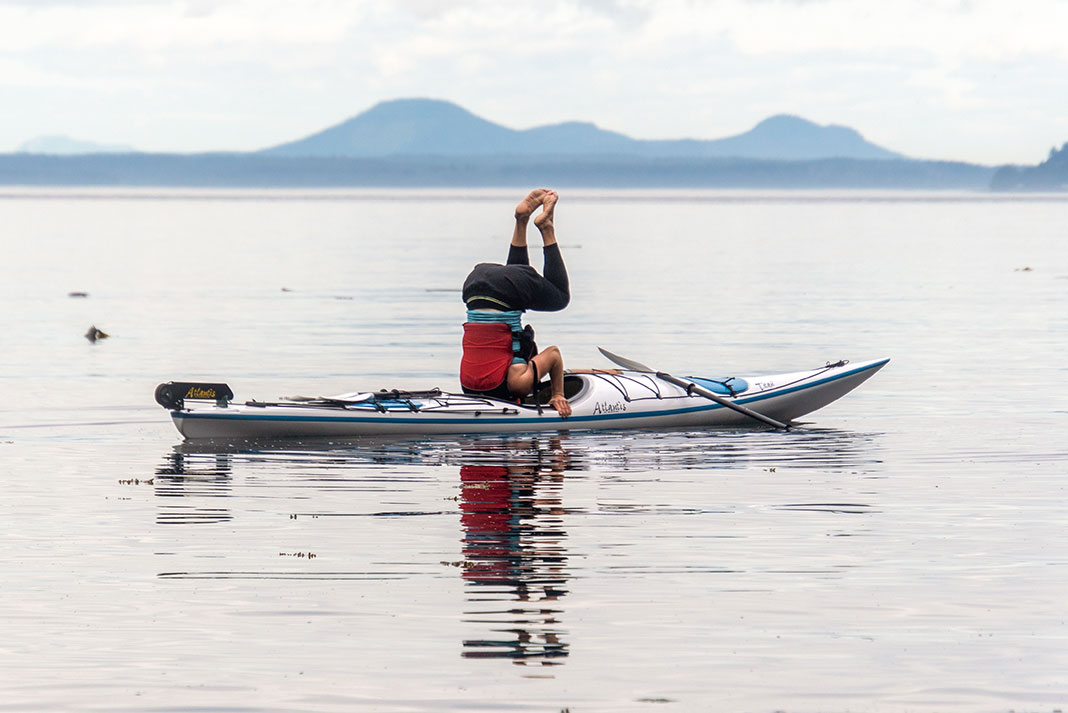Products You May Like
The internet is a miraculous place. The sum knowledge of the human experience is at our fingertips and with a few clicks we can find answers to all of life’s most common questions about kayaking and just about any other topic.
How many ounces are there in a cup? Eight. Is it safe to feed your dog onions? Nope. What’s the best way to get wine stains out of the carpet? Add a tablespoon of dishwashing soap and a tablespoon of white vinegar to two cups of warm water, blot gently.
Fortunately for us, Google compiled the most popular kayaking queries. Here are my serious answers to what seem like stupid questions.
5 most commonly asked questions about kayaking, according to Google
1 Can kayaks sink?
All boats can sink. Heck, ships sink. If Lake Superior can sink the 730-foot-long Edmund Fitzgerald capable of carrying a load of iron ore 26,000 tons more than it weighed empty, it certainly can sink a 15-foot kayak.
However, kayak designers go to great lengths to keep kayaks afloat. At a minimum, a kayak should have some foam in the bow and stern to prevent it from sinking completely. However, sinking isn’t usually the problem to worry about. Instead, you need a kayak to float high enough in the water when swamped so you can paddle to a safe spot and empty out. Bulkheads with properly sealed hatches allow for this but aren’t features found in the cheaper kayaks on the market.
2 Do inflatable kayaks work?
Perhaps it’s not surprising this is one of the most commonly asked kayaking questions when Amazon’s top result for the search term ‘kayak’ is the inflatable Intex Explorer K2.
Do inflatable kayaks work? Sure. So long as we’re not talking about the glorified pool toys at the SuperSaverMart. Many are as durable as an inflatable unicorn and move through the water like a limp iguana. Quality inflatable kayaks perform well and pack away conveniently for transport and storage. You’ll find them in your local paddle shop, not where you get your groceries.
3 Can you paddle a pedal kayak? How far?
Pedal drive kayaks are great for scooting across the water hands-free, using the stronger muscles of your legs to propel your craft. They’re especially popular as fishing kayaks because anglers don’t have to fuss around with the paddle when casting or landing a fish.
Of course, if you want to fuss around with the paddle you can, but pedal kayaks get pretty big. Some pedal kayaks are up to 44 inches wide and weigh more than 100 pounds—they’ve gone to pedals to move this big stable platform for a reason. You can paddle them as far as you’d like, I suppose. For those who want to make miles solely by paddle power, consider a longer, sleeker and more efficient touring kayak, capable of circumnavigating continents.
4 Are kayaks dangerous?
Of the estimated 37 million Americans who went paddling in 2020, 202 paddlers died according to the U.S. Coast Guard. Where cause of death was known, 75 percent of fatal boating accident victims drowned. Of those drowning victims, 86 percent were not wearing a life jacket.
The majority of paddling accidents and fatalities involve beginners—nearly three-quarters of victims had less than 100 hours experience. Reduce your risk by always wearing a life jacket, dressing for cold-water immersion, checking the weather forecast before leaving shore, and always paddle sober and with a partner.
5 Why are kayaks so expensive?
Not all kayaks are expensive. I saw one just the other day at a big feed store that sells farm equipment, and it wasn’t much more than $100. It was made out of lightweight plastic that reminded me of a kiddie pool and it had a cup holder.
However, real kayaks—like the boats featured in the Paddling Buyer’s Guide—range anywhere from $400 to $4,000 dollars. Quality kayaks cost this much because a lot goes into building them. Plastic kayaks are made in molds costing tens of thousands of dollars and cooked in ovens that cost even more. Fiberglass kayaks take a week or more to build—by hand. Want a comfortable seat? Hatches and bulkheads for safety? A rudder or skeg? A lot goes into making a quality kayak and all those details add up. They’re definitely worth the price, especially since kayaks don’t become obsolete and can last a lifetime with proper care.
This article was first published in the Early Summer 2022 issue of Paddling Magazine. Subscribe to Paddling Magazine’s print and digital editions, or browse the archives.
“Yep, there’s definitely a bulkhead in here.” | Feature photo: Brendan Kowtecky
